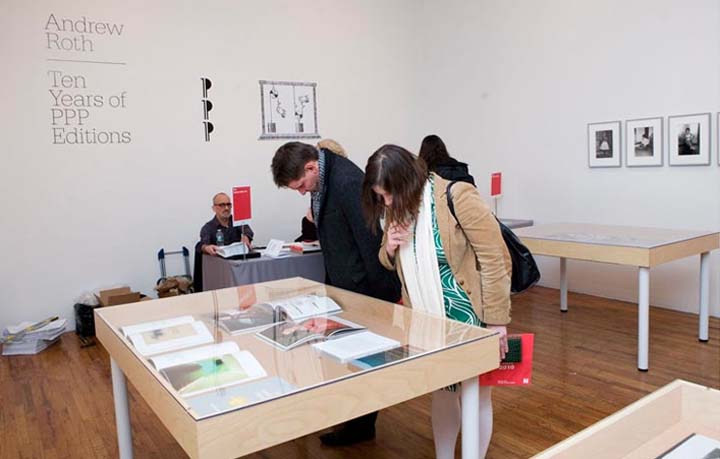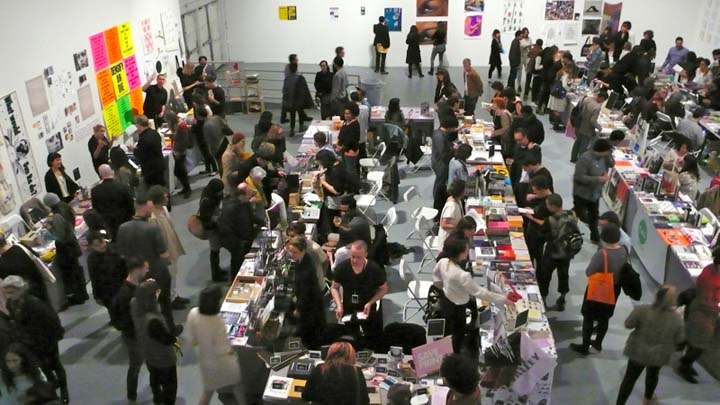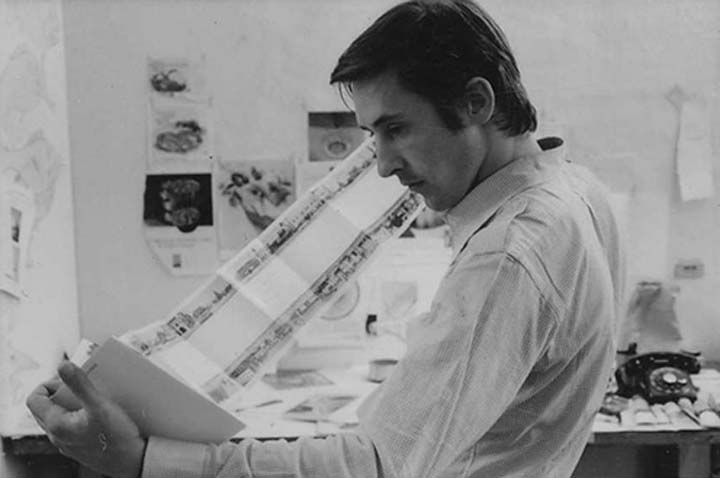Photobooks on Photobooks
Originally published in installments between 1844 and 1846 by photographer and inventor William Henry Fox Talbot, The Pencil of Nature was the first book to be illustrated entirely with photographs. Some scholars consider its importance in the history of photography to be comparable to that of the Gutenberg Bible in the history of printing.
Talbot invented the Calotype process and his photographs transformed everyday subjects into works of art. Made using a paper negative, for the first time a photographic image could be printed in multiples. Talbot’s twenty-four images that comprise The Pencil of Nature—architectural studies and local landscapes, still-lifes, close-ups, and even a single, carefully executed portrait—remain strikingly modern and quietly beautiful.
So in a sense, Talbot was also the first to self-publish a photobook. With self-publishing becoming one of the best ways for artists to have their work seen by a larger audience, this is a good time to take a look at some of the excellent photobooks on photobooks, starting with The Book of 101 Books: Seminal Photographic Books of the Twentieth Century (Roth Horowitz 2001).
In his review for The New York Times, critic Andy Grundberg wrote, “The books included range from the well known (Berenice Abbott's Changing New York, 1939) to the obscure and idiosyncratic (Pierre Molinier, Lui-même, 1972, a fetishist's delight). Each is allotted at least two pages, and its cover and a selection of inside pages are illustrated. Vince Aletti and David Levi Strauss…have provided entries that capably explain each book's genesis and significance. One learns, for instance, that Edward S. Curtis's landmark series The North American Indian fell into obscurity until its republication in 1970, 18 years after his death. And (egad!) that Alfred Stieglitz once burned 1,000 unsold copies of his influential magazine Camera Work. Since we are shown complete spreads of the printed pages, The Book of 101 Books' supplies a short course in the history of photographic book design and, even better, in the history of 20th-century photography itself.”
 Above: Andrew Roth/PPP
Editions at NY Art Book Fair, MoMA PS1, 2010
Above: Andrew Roth/PPP
Editions at NY Art Book Fair, MoMA PS1, 2010
Next up is The Photobook: A History, Volumes 1 and 2 (Phaidon 2004 and 2006), by Martin Parr and Gerry Badger. In his review for The New York Times, Philip Gefter wrote, “It surveys more than 200 books going back to photography's origins and includes information about the social issues and artistic climate of their day, as well as the circumstances of their publication. The Photobook begins with photography's introduction as a scientific tool and charts its progress as a form of creative expression - dual purposes that, over the years, grew into a nagging source of tension for photographers and scholars alike. How can a medium with so many utilitarian applications, the question goes, hold its own as a valid art form?
“Mr. Parr was 20 years old, in 1972, when he bought his first photography book - Robert Frank's The Americans, which had first been published in the United States in 1959. A French edition had been published the previous year, but its photographs appeared as illustrations of essays by serious writers, making the book more of a documentary work. The American edition stripped the texts away, leaving only a new introduction by Jack Kerouac, allowing the pictures to tell the story. ‘It opened my eyes to the potential of photography,’ Mr. Parr writes in The Photobook. ‘It showed me that the medium can interpret feelings as well as describing places.’ He continues, ‘The combination of remarkable images and good design in a book that is beautiful to open and pleasurable to leaf through is an ideal way of conveying a photographer's ideas and statements.’
“When asked if he would rather see his own photographs on a gallery wall or in a book, Mr. Parr was unequivocal. ‘In a book,’ he said in a recent interview. ‘I love the sense of the package, a traveling idea. Someone can pick it up and the idea can explode in their face. The book is a perfect vehicle for photography.’
“In the nineteen-sixties and early seventies, Japanese photographers and designers produced a body of startling photobooks whose notoriety and influence seems only to increase as time passes. ‘It was one of those periods, like Russia in the 1930s, when photographic book publishing was at the forefront of a cultural renaissance that touched all the arts,’ Martin Parr and Gerry Badger write in The Photobook, ‘a time when artists sought to take photography to the absolute limits of coherence.’”
In Numbers: Serial Publications by Artist since 1955, by Andrew Roth and Phil Aarons, was published in 2009 by PPP Editions. This is a survey of the often-overlooked genre of serial publications produced by artists around the world. From the rise of the small press in the 1960s, followed by the correspondence art movement, where artists exchanged art by post, to the DIY zine culture in the 1980s and early 1990s, professional artists have always seized on the format of magazines and postcards as a site for a new kind of art production.
The survey of 60 publications begins with Wallace Berman’s Semina and continues through Joe Brainard’s C Comics, Eleanor Antin’s 100 Boots, Robert Heinecken’s modified periodicals, the magazine of the Japanese Provoke group, Art-Language, Raymond Pettibon’s Tripping Corpse, Hans-Peter Feldmann’s Ohio, and contemporary examples such as North Drive Press and Continuous Project. In Numbers documents the history of each publication (its inception, production, distribution, and significance) together with a thorough bibliography. In addition, several longer essays and interviews by experts, such as Clive Phillpot, Nancy Princethal, Vince Aletti, William S. Wilson, and Neville Wakefield, complement the individual entries to provide a historical context and overview.
 Above: Scene at inaugural LA Artbook Fair,
at the Geffen Contemporary | MoCA, in January.
Above: Scene at inaugural LA Artbook Fair,
at the Geffen Contemporary | MoCA, in January.
In Japanese Photobooks of the 1960s and ’70s (Aperture 2010) Ryuichi Kaneko and Ivan Vartanian give this era a close but wide-ranging study, drawing on Kaneko’s seemingly limitless library of photobooks. The New Yorker’s Rollo Romig wrote, “In his introduction, Vartanian warns that the popular understanding of these books has too often been reduced to a single shorthand aesthetic, ‘a blur of high contrast images bled on all sides and predominated by islands of tone on the printed page.’ While that style is certainly represented in Japanese Photobooks, the thread, Vartanian suggests, is subtler than that. These books are largely anti-journalistic: they tend to reject the notion that photographs serve primarily to document and record events; they draw attention to artifice and technique; they manipulate narrative structure, or ignore it entirely. Many of the photographers represented here created what Vartanian calls ‘pure’ images, divorced from literal meaning: not illustrations for texts, but anti-texts. In doing so, they helped photobooks come to be seen as objects of art in themselves.”
The growing appreciation for photobooks prompted Aperture to bring out two more studies of the genre, including The Latin AmericanPhotobook in 2010, the culmination of a four-year, cross-continental research effort led by Horacio Fernandez, author of the seminal volume Fotografia Pública. Compiled with the input of a committee of researchers, scholars, and photographers, including Marcelo Brodsky, Iatã Cannabrava, Pablo Ortiz Monasterio and Martin Parr, The Latin American Photobook presents 150 volumes from Argentina, Bolivia, Brazil, Chile, Colombia, Cuba, Ecuador, Mexico, Nicaragua, Peru and Venezuela. It begins with the 1920s and continues up to today, providing revelatory perspectives on the under-charted history of Latin American photography.
Last year Aperture published The Dutch Photobook: A Thematic Selection from 1945 Onwards. The current photobook publishing boom in the Netherlands stems from a tradition of excellence that precedes World War II, but the postwar years inaugurated a period of particularly close collaboration between photographers and designers, which continues today. Innovations such as the photo novel and the company photobook of the 1950s and 60s and later genres including books on youth culture, urbanism and landscape photobooks and travelogues emerged. Examining each of these genres across six themed chapters, The Dutch Photobook features selections from more than 100 historical, contemporary and self-published photobook projects.
As part of its 60th anniversary celebrations, Aperture teamed up with Paris Photo, the annual French photography fair, to launch The PhotoBook Review, a new biannual publication on photography books, and a new award to honor the best photography books of the year, including both trade and self-published editions. Aperture has also launched new programs for its gallery and bookstore to bring greater visibility to other photobook publishers as well as its new digital releases, including the current issue of The PhotoBook Review.
Most recently, Various Small Books: Referencing Various Small Books by Ed Ruscha, edited by Jeff Brouws, Wendy Burton, and Hermann Zschiegner (MIT 2013) charts a sub-genre of photobooks that has been expanding, almost under the radar since Ruscha began his groundbreaking process of making easily accessible, affordable artist books.
In the 1960s and 1970s, Ruscha created a series of small photo-conceptual artist’s books, among them Twentysix Gas Stations, Various Small Fires, Every Building on the Sunset Strip, Thirtyfour Parking Lots, Real Estate Opportunities, and A Few Palm Trees. Featuring mundane subjects photographed prosaically, with idiosyncratically deadpan titles, these “small books” were sought after, collected, and loved by Ruscha’s fans and fellow artists.
 Above:
Ed Ruscha with Every Buildilng on the Sunset Strip, courtesy MIT Press.
Above:
Ed Ruscha with Every Buildilng on the Sunset Strip, courtesy MIT Press.
Over the past thirty years, close to 100 other small books that appropriated or paid homage to Ruscha’s have appeared throughout the world. This book collects ninety-one of these projects, showcasing the cover and sample layouts from each along with a description of the work. It also includes selections from Ruscha’s books and an appendix listing all known Ruscha book tributes.
These small books revisit, imitate, honor, and parody Ruscha in form, content, and title. Some re-photograph his subjects: ThirtyfourParking Lots, Forty Years Later. Some offer a humorous variation: Twentynine Palms (twenty-nine photographs of palm-readers’ signs). Some say something different: None of the Buildings on Sunset Strip. Some reach for a connection with Ruscha himself: 17 Parked Cars in Various Parking Lots Along Pacific Coast Highway Between My House and Ed Ruscha’s.
An exhibition that collects over 100 of these volumes is on view at Gagosian Gallery through April 27. 980 Madison Avenue, NY, NY. When you go, allow yourself plenty of time to study and reflect because photography is not permitted, while note-taking and sketching are.
Some photobook resources and events
The AIPAD Photography Show, April 4-7, with panel discussions
throughout the day on April 6
Aperture Bookstore and Gallery
ARTBOOK @ at MoMA PS1
Dashwood Books
Harper’s Books
Paris Photo
L.A.
Printed Matter
Andrew Roth/PPP Editions
The
Store at ICP
Future Events
The NY Art Book Fair 2013
Paris Photo Aperture PhotoBook Prize
Paris Photo
The
L.A. Art Book Fair 2013
photobookreview


